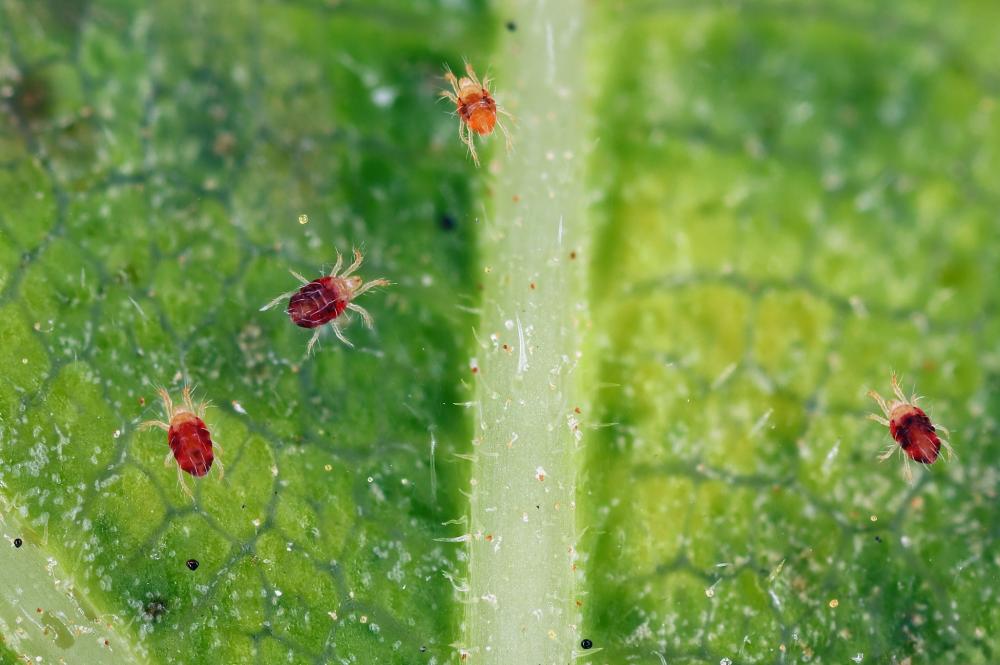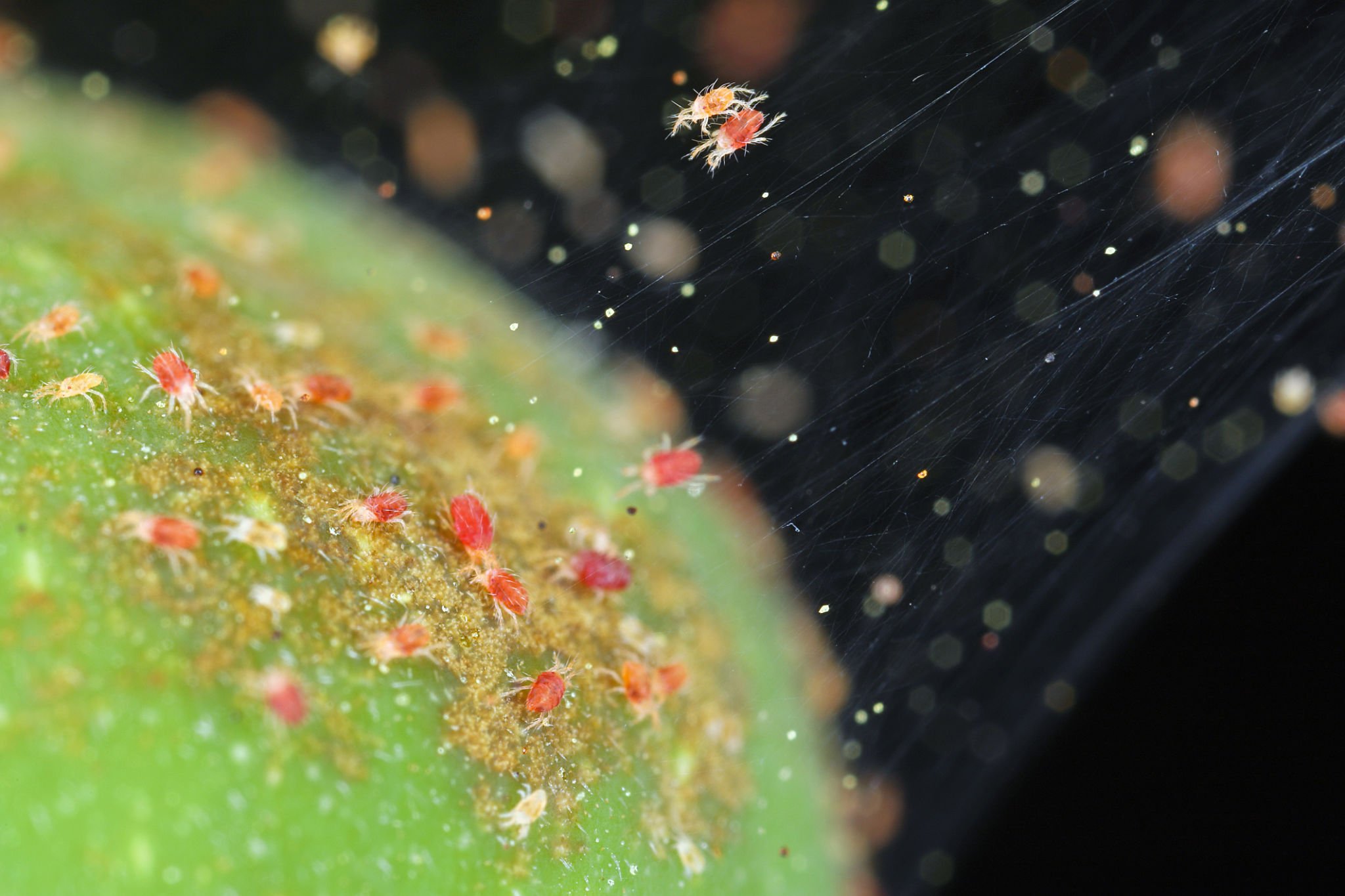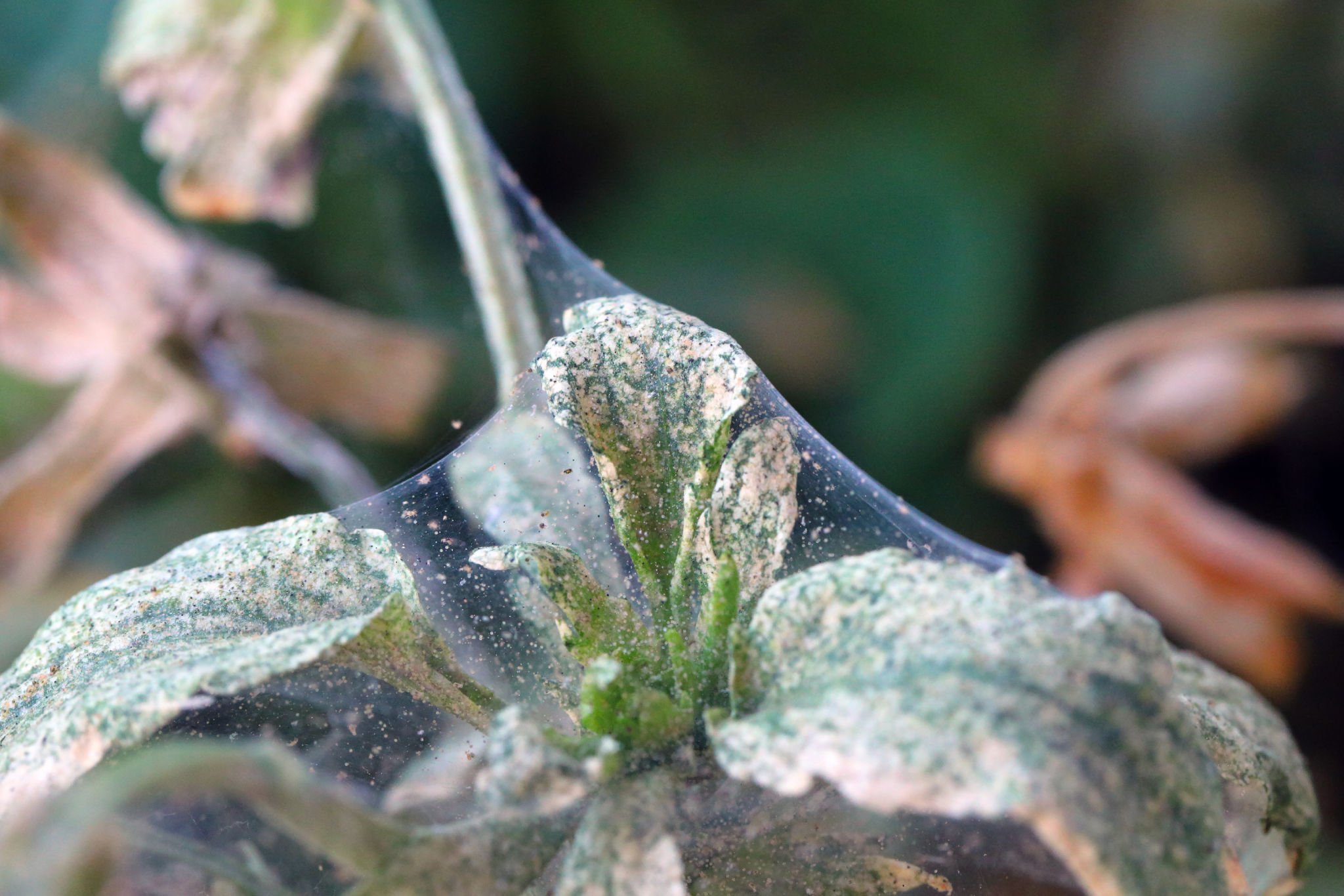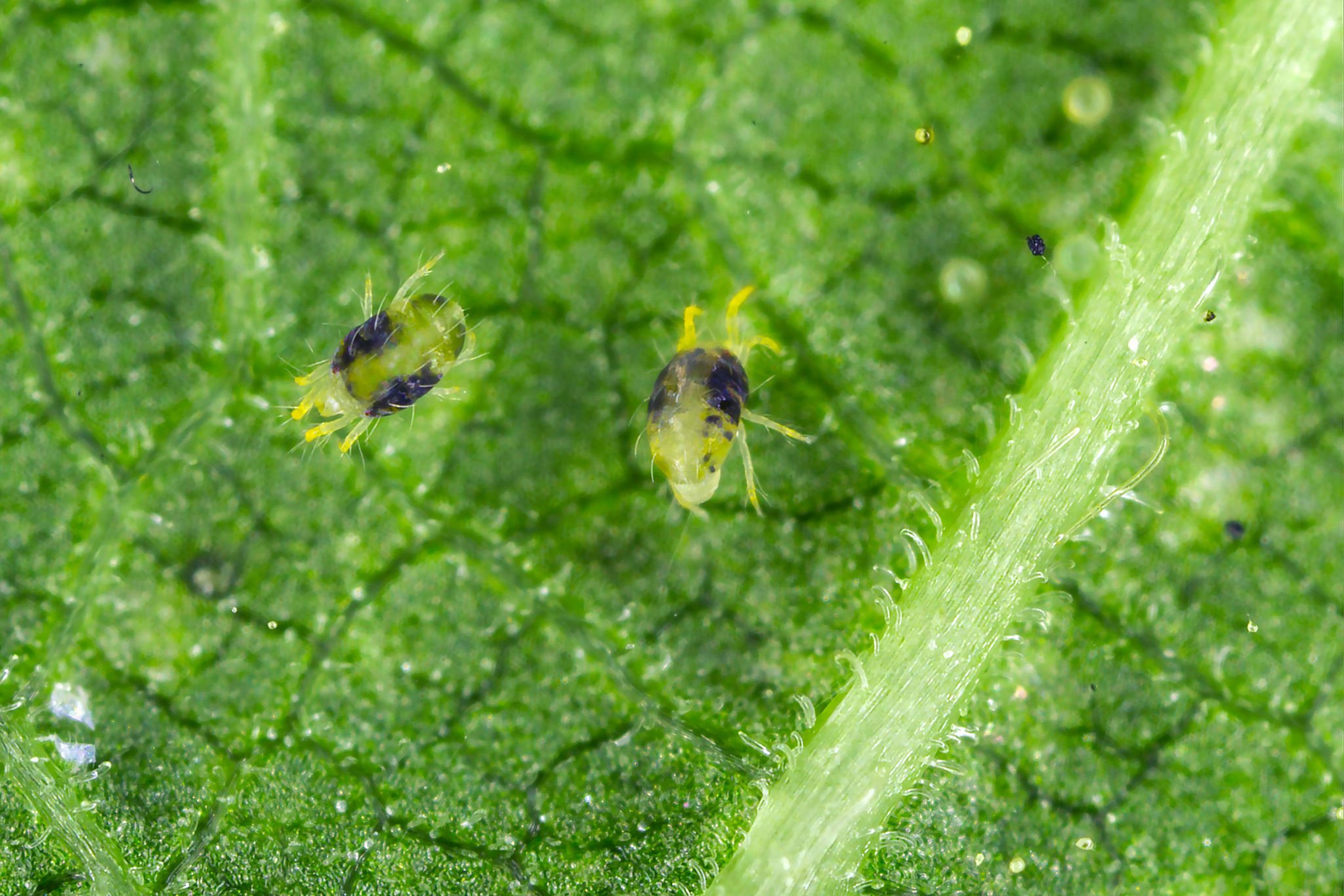
- The red spider mite is one of the most dangerous mites that attack agricultural plants. It is very small (0.4–0.7 mm) and red or orange in color. It often lives in colonies on the underside of leaves. It feeds by sucking plant sap from the cells, causing the leaves to gradually yellow and dry out. If neglected, this can significantly reduce yields.
- Its danger is due to:
- 🌀 Its reproduction speed (repeated generations during the season).
- 🌡️ Its strong activity in hot and dry climates.
- 🌱 It attacks vegetable, fruit and ornamental crops.
- 🕸️ Producing silk threads that protect it and help it spread.

Main species of red spider
- 🔴 The red two-spotted spider ( Tetranychus urticae )
- The most widespread pest worldwide—it attacks tomatoes, cucumbers, strawberries, grapes, citrus fruits, and ornamental plants. It is characterized by two dark spots on either side of the body.
- 🍎 European red spider ( Panonychus ulmi )
- Affects apples and grapes – overwinters as red eggs on branches – common in temperate regions.
- Citrus spider mite ( Panonychus citri )
- Specializes in citrus fruits (oranges, lemons, grapefruits) – causes yellowing and general weakness of trees.
- 🌾 Red cotton spider ( Tetranychus cinnabarinus )
- It is found in cotton and vegetables such as corn, peanuts, and beans - it is more reddish in color than double spot.
- 🌴 Red spider in palm trees
- It occurs in dry areas and causes yellowing of the fronds, poor growth and poor date yield.
How do you know if your plant is infected with red spider mites?
- 🌱 Fine yellow dots on the leaf surface.
- 🍂 Gradual yellowing, then drying and falling of leaves.
- 🕸️ Thin silk threads under the leaves or between the branches.
- 🔍 Seeing very small red or orange insects in the eye or lens.
- 📉 General weakness of the plant and decline in yield.
- 🌾 Crops most susceptible to infection
- 🥒 Tomatoes, cucumbers, zucchini.
- 🍓 Strawberries.
- 🍇 Grapes.
- 🍊 Citrus fruits.
- 🍎 Apples and pears.
- 🌴 Palm trees.
- 🌹 Ornamental plants.

Red spider life cycle
- 🥚 Eggs: Small, transparent or red, hatch within a few days.
- 🐛 Nymphs: Start out transparent and then turn yellow or red.
- 🕷️ Full individuals: less than 1 mm long, red or orange in color.
- ⏳ Cycle: 10-14 days only in summer → Repeated generations.
- ❄️ Some species, such as European and citrus, spend the winter as red eggs on branches.
Impact on crop
- 🌱 Reducing the plant's ability to photosynthesize.
- 🍂 Poor vegetative growth and early leaf fall.
- 🍏 Decreased fruit quality and size.
- 🏠 High losses in greenhouses and large farms.

Methods of prevention and reduction of infection
- 🌿 Dispose of infected plant remains after harvest.
- 💧 Maintaining appropriate humidity inside greenhouses.
- 🌬️ Improve ventilation to reduce dry conditions.
- 🪲 Using natural enemies such as the predatory mite Phytoseiulus persimilis .
- 📅 Check the lower leaves regularly to detect infection early.
Active ingredients to combat red spider
- 💉 Abamectin 0.5-1 ml per 1 liter of water kills entire individuals with rapid paralysis.
- 🥚 Clofentzine 0.5 g per 1 liter of water stops egg hatching and prevents nymph development (early preventive).
- 🛡️ Hexythiazox 0.5 g per 1 liter of water is effective against eggs and early larvae and provides long-lasting protection.
- 🔄 Etoxazole 0.5 ml per 1 liter of water is a growth inhibitor that prevents nymphs from turning into adults.
- ⚡ Bifenthrin 0.5 – 1 ml per 1 liter of water, a rapid contact insecticide for whole individuals, suitable for severe infestations.
Practical tips for farmers
- 🔄 Change the active ingredients and do not repeat the same pesticide throughout the season.
- 🛡️ Start with preventive medications (clofenac - hexathiazolin - etoxazole).
- ⚡ Use rapid materials (Abamectin - Bifenthrin) when the infestation is severe.
- 🕷️ Focus on spraying on the lower surface of the leaves.
- 📅 Repeat spraying every 10-14 days depending on the severity of the infestation.
- 🧩 Relying on integrated pest management (preventive + biological + chemical) is the best solution for control.

